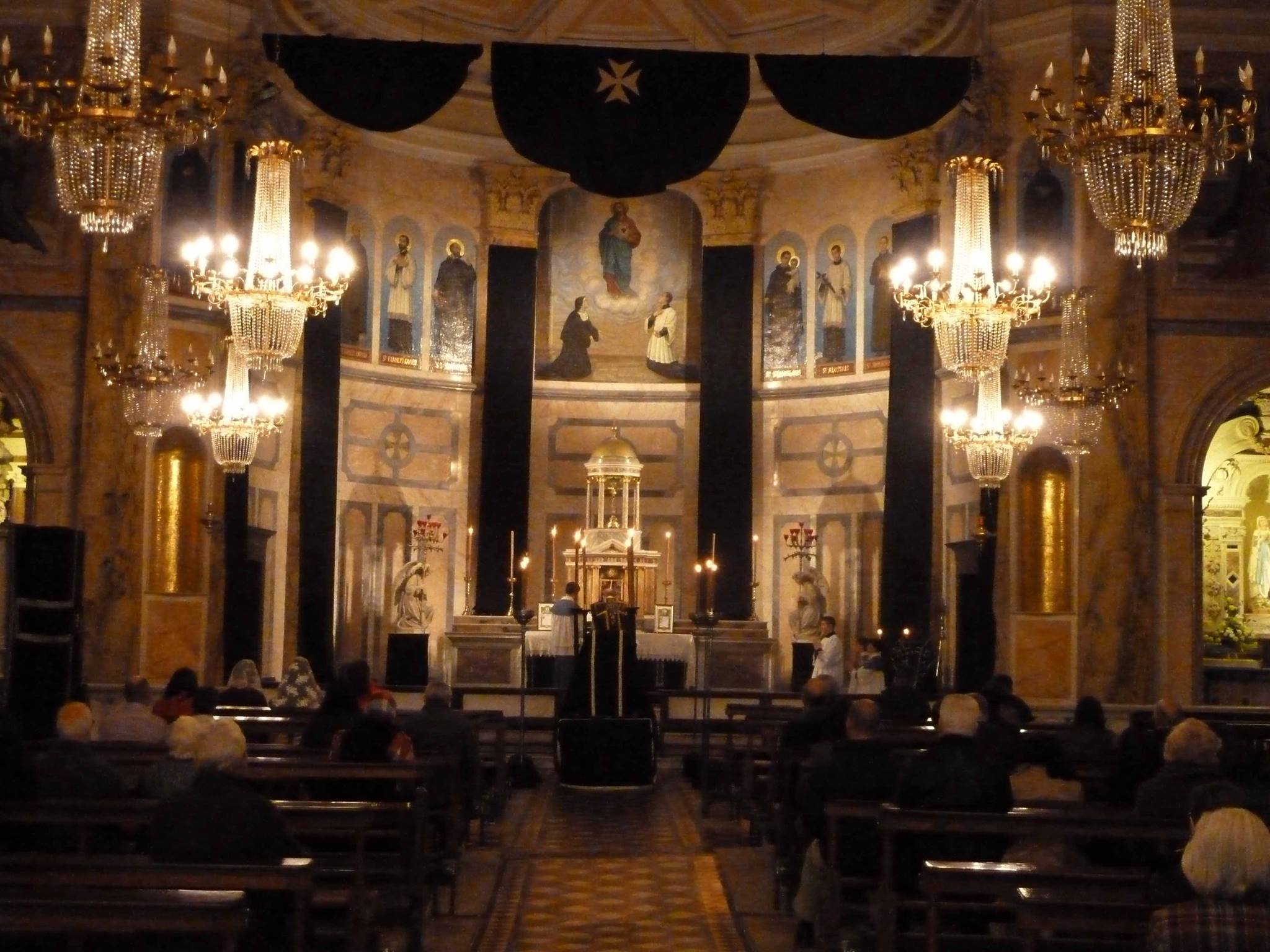
Sergey Smirnov (Own work) or GFDL (http://www.gnu.org/copyleft/fdl.html)], via Wikimedia Commons
Today is the Feast of St. Peter’s Chair at Rome.
In this season after Epiphany, the liturgy focuses on the manifestation of the Divinity of Jesus, as revealed at His Baptism.
This important feast is placed within this season, for it reveals the divine roots of Holy Mother Church, the Church of Jesus Christ.
The gospel reading for the day is the famous passage from St. Matthew:
Jesus saith to them: But whom do you say that I am? Simon Peter answered, and said: Thou art Christ, the Son of the living God. And Jesus answering, said to him: Blessed art thou, Simon Bar-Jona, because flesh and blood hath not revealed it to thee, but My Father who is in heaven: and I say to thee, that thou art Peter, and upon this rock I will build My Church (xvi. 15-18).
And so the significance of where St. Peter’s Chair is found merits contemplation. For, wherever stands this Chair, will be the place of the foundation of the Church of Jesus Christ.
It was in Antioch that St. Peter’s Chair was first set. And there he presided as Bishop.
He then came to Rome around 42 AD, moving there, his Bishopric and the seat of the Church.
Having presided over the Church in Jerusalem and Antioch, he now came to claim his true place and set his Chair in Rome, the capital city of the Empire.
And there, in Rome, his Chair – the episcopal office of the Pope – remains till this day.
The St. Andrew’s Missal (a standard pre-Vatican II Latin Mass Missal) tells us:
Rome is to be the capital of the kingdom of heaven upon earth. It is to Rome that Peter will come, it is on Rome’s blessed soil that he will shed his blood, he will be Bishop of Rome.
Wherefore we must see in this feast a liturgical testimony to the primacy of honour and jurisdiction attached to the chair of Rome.
And upon this chair is seated the rock on which the Church of Jesus Christ was built.
Again, it is written in the St. Andrew’s Missal:
Christ is the Head of the Church. But as He is to reascend … to heaven, He communicates His divine power to a man … The man whom Jesus constitutes ‘Prince’ of souls and ‘on whom He builds His Church’, is St. Peter.
As Vicar of Christ he will sit in the chair once occupied by Jesus and will hold in his hands the keys as symbol of supreme authority. (St. Andrew’s Missal).
The supreme authority of St. Peter, as head of the Church of Rome, began to bring unity.
His supreme authority was begun at Pentecost, where his preaching converted thousands to the new faith.
As supreme head, he made an Apostolic visit of all churches.
Then, he was called from Rome, to preside over the Council of Jerusalem in circa 51 AD.
The German Church historian F. X. Funk, writes of this unity:
As Jesus Christ announced one only God and one only faith, so he founded one only Church and gave to her, in the person of Peter, the head of the apostles, an external and visible unity. Such an arrangement was not restricted to apostolic times; it was important also for the future, and this prerogative, which was conferred on Peter, must needs pass on to his successors. The Bishops of Rome were at the head of the whole Church.
And in A Short History of the Catholic Church, P. Hughs declares:
Of all these churches one, from very early times, is seen to have a special role, regulating the affairs of other churches, and acting with a higher kind of authority over them. This is the Church of Rome … which had for its ruler the apostle St. Peter.
The Chair of St. Peter represents the primacy of the Papacy over the whole Church. Only from this Chair, can the Holy Father pronounce a statement of infallibility.
Or as the Sunday Visitor’s Catholic Encyclopaedia states the matter:
When the Pope teaches formally, authoritatively and infallibly, he is said to speak ex cathedra, literally, ‘from the chair’, thus denoting the teaching’s official, solemn and binding nature on all the world’s faithful.
On this chair, the visible head of our Church sits and beneath him, the hierarchy of Bishops and Priests, reflecting the heavenly hierarchy.
It is from this chair that the Doctrines of the faith have been formulated and proclaimed.
It is from this Chair that the Institution of the Church has been built.
It is from this chair that Her structures and liturgy have developed.
From this chair was built the Church of Jesus Christ, against which the gates of hell shall not prevail.
This Feast honours Her very foundation and the hierarchical structures by which She functions – all which comprises the faith.
The Chair of St. Peter is the foundation of everything the Catholic Church was, is and ever will be.
For, it is the seat of the rock upon which the Church was built.
And it is in Rome that this rock resides. And from Rome, all that She is will come.
The rock, the place, the chair, the Church, are all united.
And within St. Peter’s Basilica in Rome, hidden inside Bernini’s magnificent creation of the Papal Chair, lies the ancient holy relic of the Chair of St. Peter …
Video featuring Author of this blog

